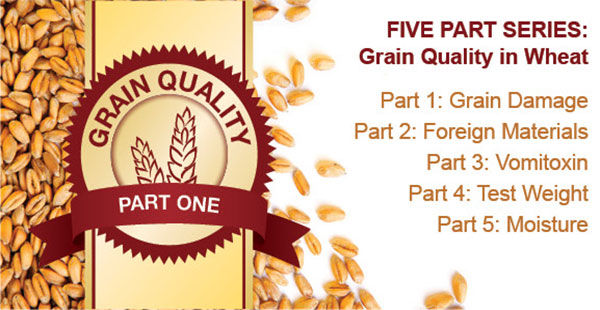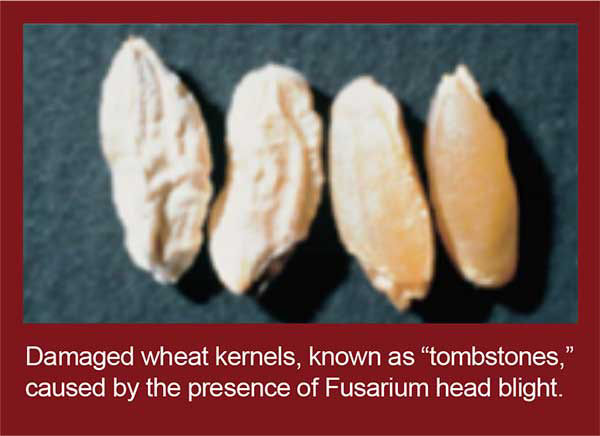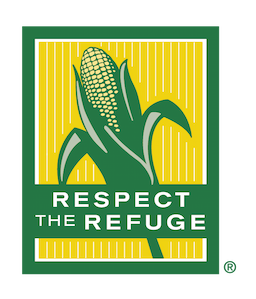Five Part Series: Focus on Grain Quality in Wheat
December 18, 2015

If only grain marketing was as simple for wheat as it is for corn. Corn marketers focus on yield, with an occasional discount based on moisture levels. But the formula is much more complex for spring and winter wheat alike. The price you receive for your wheat depends on much more than yield.
It’s a delicate balancing act between grain damage, foreign materials, Vomitoxin, test weight and moisture. You might have an incredible yield in terms of bushels per acre. But factor in potential quality discounts, and you just might negate the profit potential of high yield alone.
In this five-part series, we break down and examine each of the factors that play a role in the price you receive for your wheat crop. First, we look at grain damage.

Part I: Grain Damage
Elevators and millers view grain damage as any irregular change – esthetically, biologically or physically – to the wheat kernels. More specifically, discoloration of kernels or a change in size, shape or test weight are solid indicators that grain damage has occurred.
Other changes observed in wheat that can count against growers are significant sprout and heat damage. These alter the biological make-up of the wheat kernels, affecting protein levels and physiological structure.
These are just some examples of grain damage typically result in significant discounts for wheat growers. The Washington State Crop Improvement Association provides a helpful and more extensive reference guide to USDA-defined types of wheat grain damage.
A Marketer’s Point of View
Ed Usset, Marketing Specialist at the University of Minnesota, says consistency of wheat quality is extremely important in any situation.
“Take, for example, wheat that goes into producing flour. The consumer wants that flour to perform the same every time. In order for consistent flour,” Usset explained, “elevators and millers need consistent quality grain. Damaged kernels are just one factor that can compromise the quality of the flour.”
Usset explained that grain damage and other discounts tend to be steepest at harvest. Over time, the market evens out and what was heavily discounted at the start of harvest is much less severe later in the year.
“Just because you don’t see symptoms of grain damage, doesn’t mean you won’t receive the implication of it.”
- Andrew Friskop
Plant Pathology of Grain Damage
In many instances, grain damage is due to a variety of weather-related factors. One influence on grain damage often attributed to weather is disease pressure. Growers usually don’t worry about disease unless they see symptoms, but that can lead to unnecessary grain damage.
“Just because you don’t see symptoms of grain damage, doesn’t mean you won’t receive the implication of it,” said Andrew Friskop, Assistant Professor of Plant Pathology at North Dakota State University. “Diseases like Fusarium head blight (FHB), or scab, can take hold of wheat crops and emit mycotoxins without exhibiting symptoms. This can make management difficult.”
When scab is visible in the crop, the primary symptom is the bleaching of some florets before they reach maturity. This causes infected florets to be sterile, or produce kernels that have a shrunken, chalky, white appearance. This appearance has earned them the industry moniker "tombstones."
“It’s important to use a variety of management tools to prevent and stop the spread of grain infections early,” Friskop added. “One tool is timely, effective fungicide applications. This will take care of a lot of disease issues throughout the growing season.”
Using effective broad-spectrum fungicide products that include a unique triazole, like Prosaro, can help growers limit disease pressure and protect against both leaf and head infections. This will stop infections from progressing and will help the plant focus its energy on filling the grain.

Friskop also warned other head diseases can inflict damage to wheat grains that growers should be concerned about include red smudge, black ‘sooty’ mold and black point. These infections are rare but can happen from time to time.
“Growers should use everything that they can to manage diseases on their fields beyond just fungicide applications,” said Friskop. “Make an effort to choose varieties resistant to diseases particular to your field. Use effective crop rotations that limit consistent fungal issues in your crop. Don’t rely on one method of success and make sure to vary your approach.”
Check back next month, when we look at foreign materials in wheat.
We would love to hear how you manage grain quality in wheat. Tweet us your story – @Bayer4CropsUS.
For more information about grain quality in wheat visit www.cropscience.bayer.us, call 1-866-99-BAYER (1-866-992-21937) or talk with your local sales representative.






